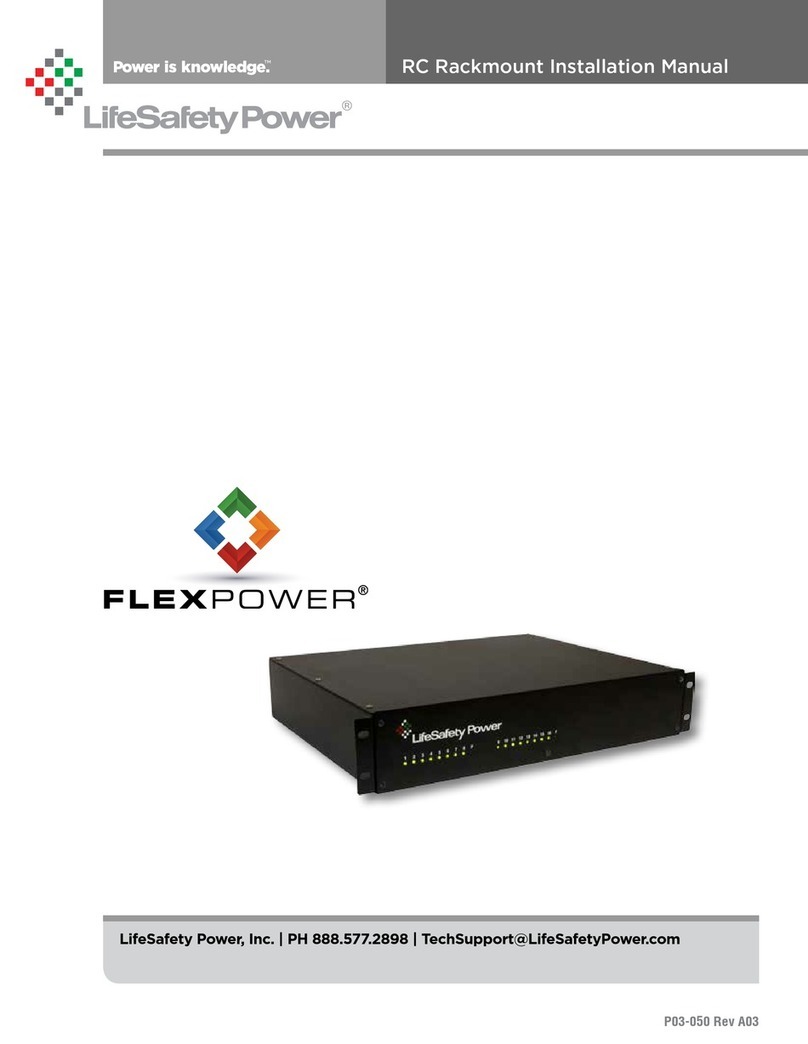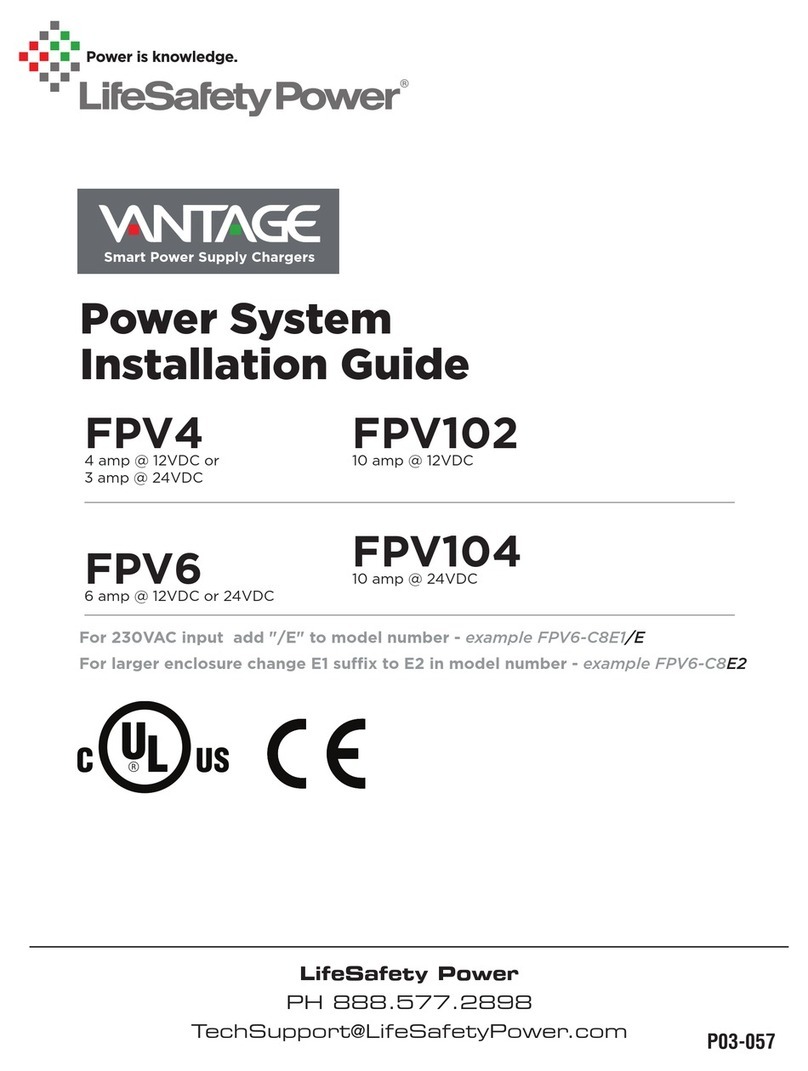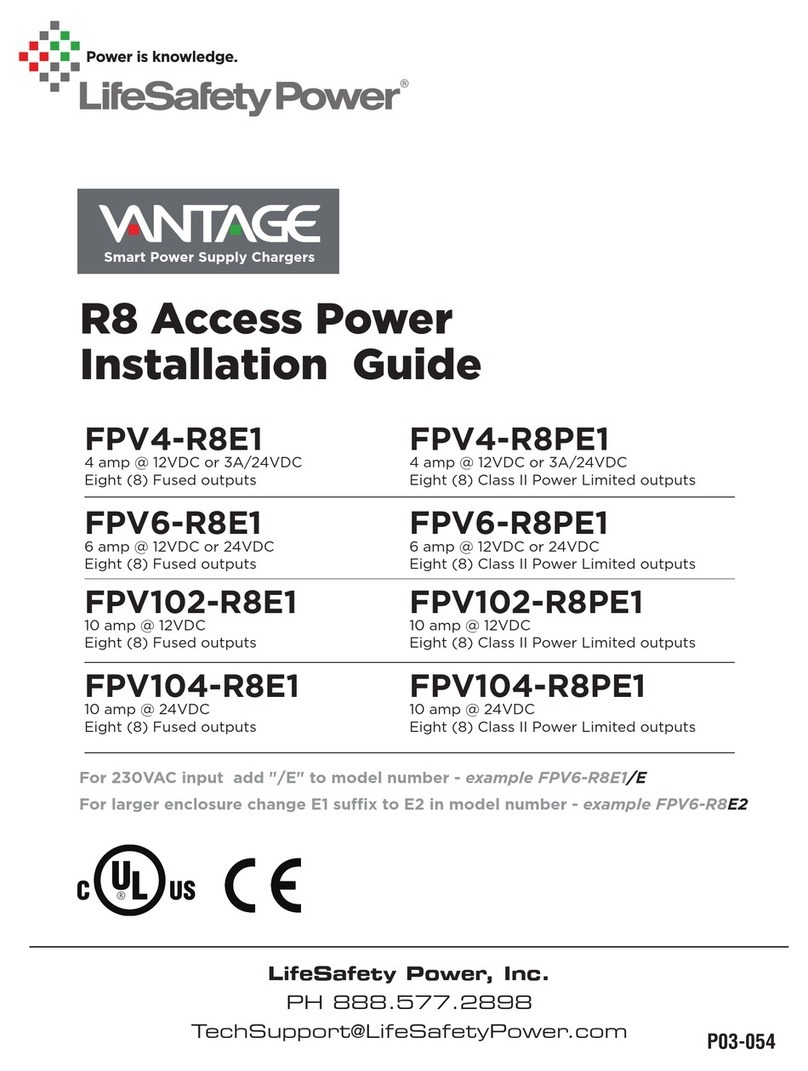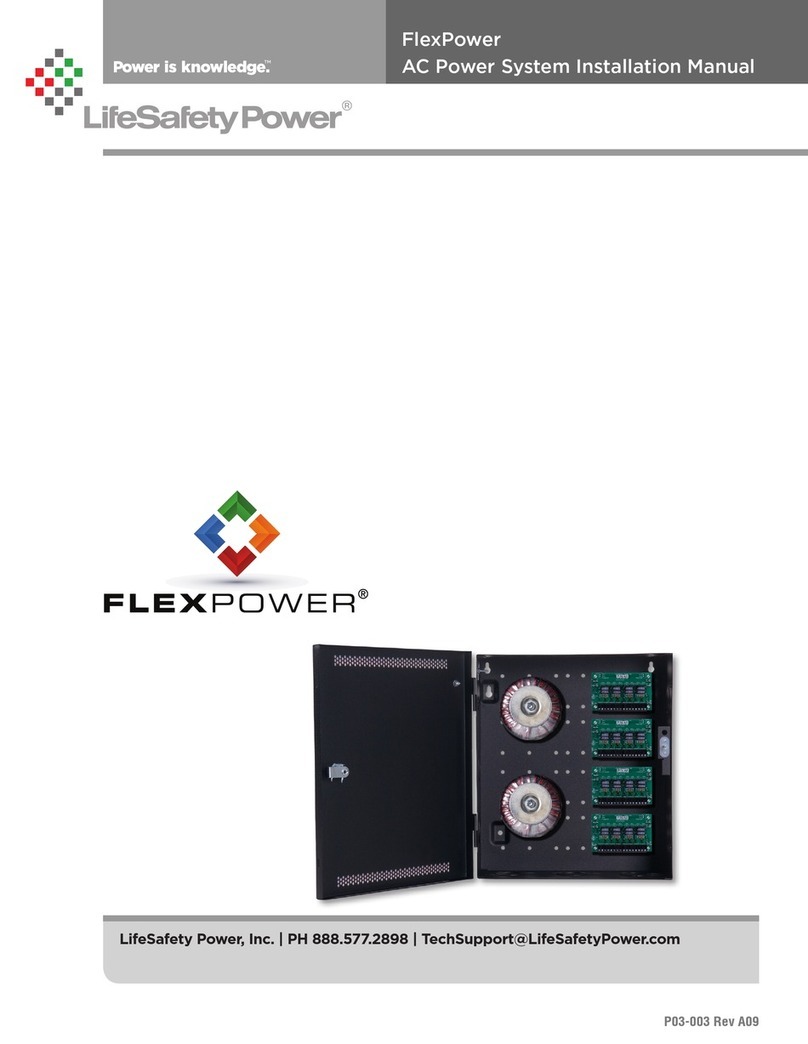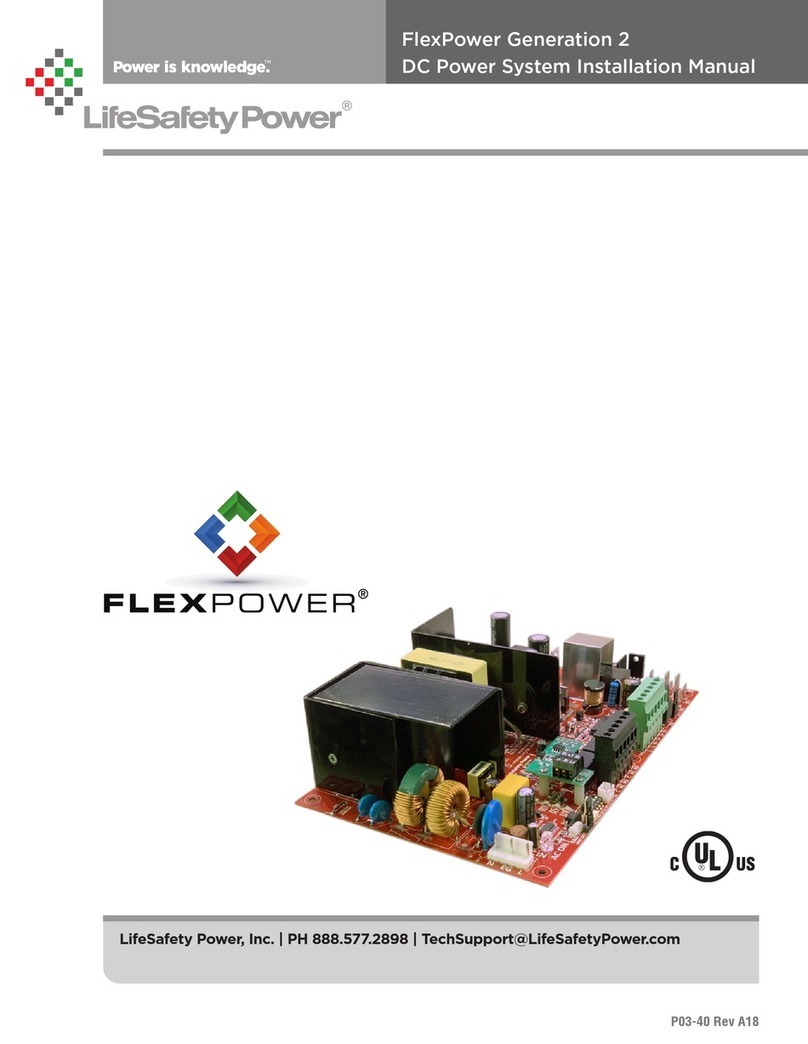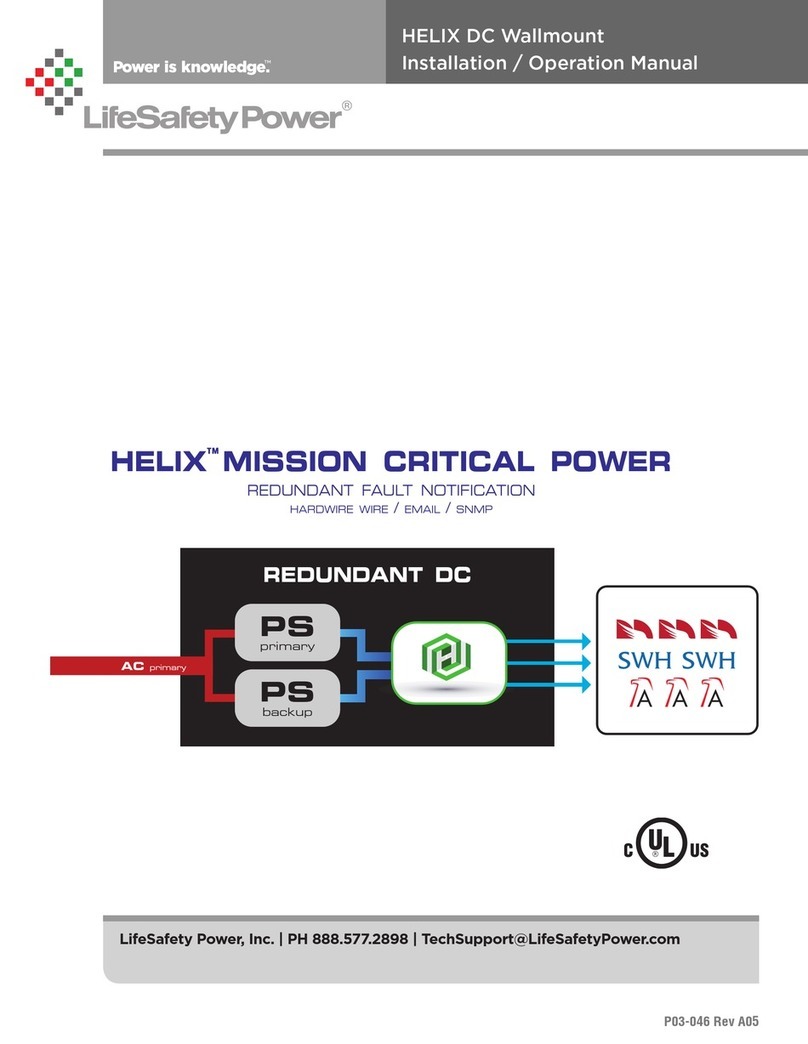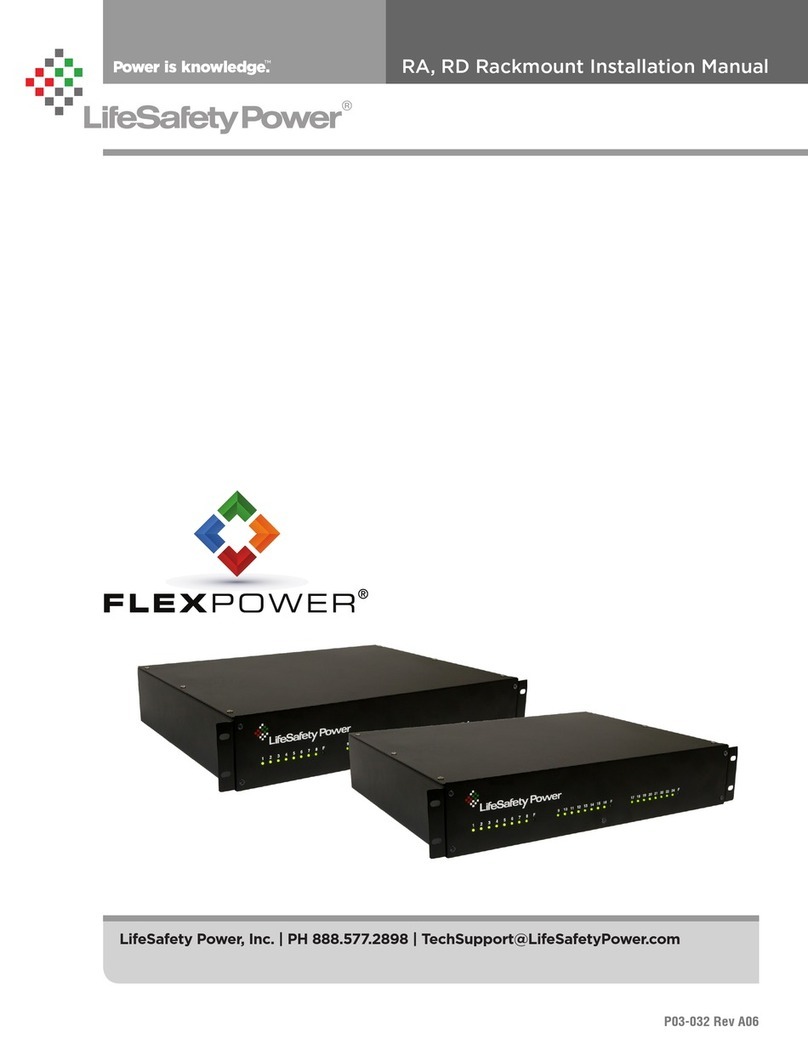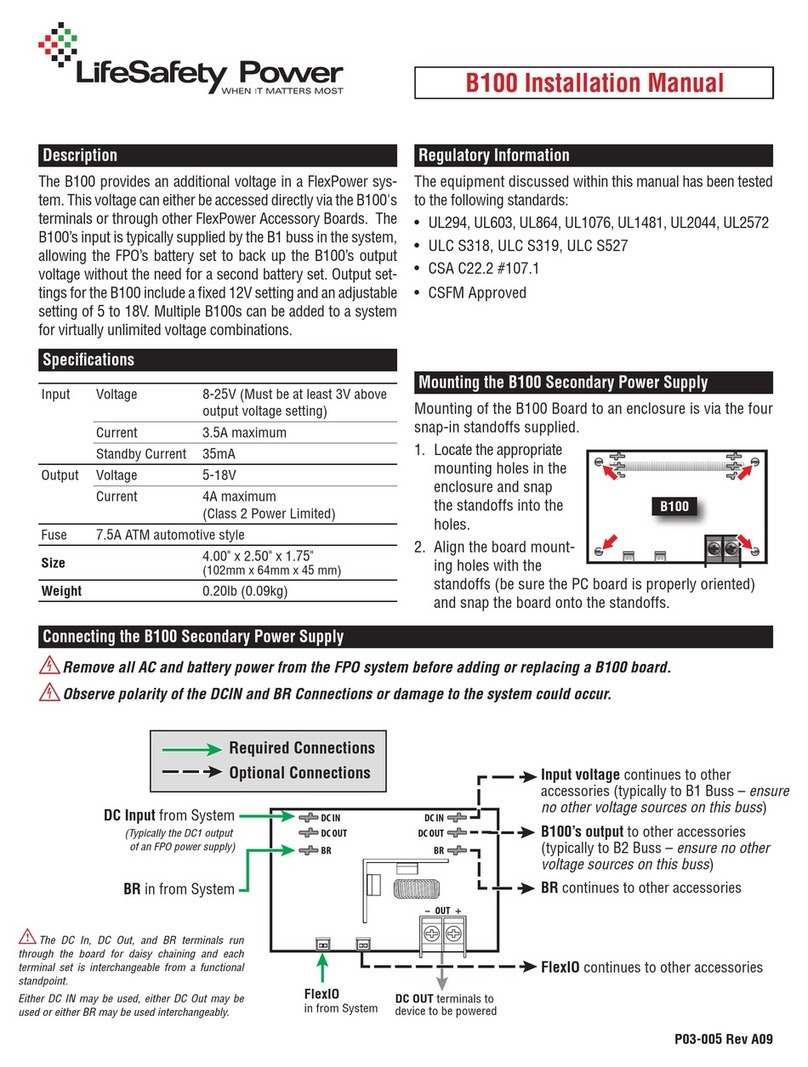
FlexPower DC Power System Installation Manual
4 5
Installation and Operation
9Battery Presence Detection (JP3) The BAT DET jumper en-
ables or disables Battery Presence (BP) fault detection as follows:
• Position 1 (jumper ON) Enable EG Fault Detection
• Position 2 (jumper OFF) Disable EG Fault Detection
IEnabled (Postion 1) is the factory default position which
will cause a fault too occur if a battery is not connected.
Battery Presence fault detection indicates a fault when the backup
battery is disconnected from the FPO power supply. If no backup
battery is being used, this jumper should be removed.
bk FAI Input Connections (TB2) These terminals accept the
optional FAI / Access Control input for controlling the DC2 output
and any FAI capable accessory boards connected to the FPO power
supply. The terminals are removable and are labeled on the PC
board. These terminals accept AWG14 – AWG22 wire. See Section
1.3. Connections are as follows:
• I+ & I– TerminalsThese terminals are the input terminals for the
FAI Input. The FAI input is activated when a voltage between 9
and 30 volts is applied across these terminals in the correct polar-
ity. See Section 1.3 - FAI Input Usage for more information.
• V+ & V– TerminalsThese terminals are a low-current auxiliary
voltage output and are typically used with a dry contact or open
collector for activating the FAI Input's I+ and I- terminals.
• L TerminalsLatch Reset contact input. If a latching FAI Input is
desired, a normally closed contact is placed across these termi-
nals. When the FAI Input is activated, it will latch in the activated
state until this contact is momentarily opened. If the latching
feature is not desired, leave these terminals open.
bl FlexConnect Power Connections Faston connectors for
the power connection to any accessory boards to be connected.
Pre-terminated power leads are provided with the accessory
boards. For more information, see the instruction manual for any
accessory boards used in the system. Connections are as follows:
• DC1This faston provides a constant voltage output for
connection to the accessory boards.
• BRThe DC Common (DC Ground) for the FPO power supply.
• DC2This faston provides an FAI controlled output that
operates in conjunction with the DC2 output terminals. This
connection is typically only used in single voltage systems
with D8 accessory boards. See the sections on the FAI Input
and DC2 Output Configuration for more information.
bm
NetLink Power Connection (V+ & V–) Faston connec-
tors for powering a NetLink network module. Do not power the
NetLink module from the DC1 or DC2 buss. See the NetLink
module manual for more information.
bn Battery Connection (BAT+ & BAT–) Faston connectors
for connection of the backup battery set. Pre-terminated
battery leads are provided. See the Specifications section
for the maximum battery size. If no battery set is to be
used, ensure the BAT DET jumper is off to prevent a fault
condition from being annunciated.
HNote that FPO75 PCB and FPO150-250 PCB's have different
battery connection layouts.
HA FPO set for a 12V output requires a 12V battery set. A FPO
supply set for a 24V output must use a 24V battery set (two
12V batteries in series).
HObserve polarity or damage to the system will occur.
HIt is the installer’s responsibility to determine the proper bat-
tery size for the installation. See the Specifications section for
standby current requirements.
bo DC2 (D5) – Green
This LED lights when voltage is available on the DC2 output
terminals. This LED will extinguish if the output is disabled via
the FAI input.
bp REV BAT (D20) – Yellow
This LED lights if the backup battery set is connected in the
reverse polarity. The lighting of this LED will also be accompa-
nied by the rupture of the battery fuse (F4) and the lighting of
the SYS FLT LED.
bq DC2 Output (TB1) The DC2 output may optionally be con-
trolled by the FAI input. The full current of the FPO is available on
these terminals. If not using the FAI input, the DC2 fuse should be
inserted into the NC fuseholder to allow the DC2 output to provide
continuous power. See the sections on the FAI Input and DC2
Output Configuration for more information. These terminals accept
AWG12 – AWG18 wire.
IWhen powering magnetic loads such as maglocks, door
strikes, solenoids, etc, each of these loads must have a reverse
protection diode either built-in or external to the device.
br DC1 Output (TB1) The main DC output of the FPO power
supply. The full current of the FPO is available on these terminals at
all times and is unaffected by the FAI input. These terminals accept
AWG12 – AWG18 wire.
IWhen powering magnetic loads such as maglocks, door
strikes, solenoids, etc, each of these loads must have a reverse
protection diode either built-in or external to the device.
bs DC2 Output Configuration (F2 & F3) By selecting the
appropriate fuse holder for the DC2 fuse, the fail-safe or fail-secure
operation of the DC2 output can be selected.
• DC2+ NO (F2)– the DC2 output will energize when an FAI
signal is received on the FAI input.
• DC2+ NC (F3) – the DC2 output will de-energize when an
FAI signal is received on the FAI input.
If the FAI input is not used in the installation, placing the DC
fuse in the DC2+ NC fuseholder will allow the DC2 output to be
used as a second power output. Do not install fuses into both
fuse holders simultaneously.
bt
DC1 (D4) – Green
This LED lights when voltage is available on the DC1 output
terminals.
ck Output Voltage Selection (SW1) This switch or jumper
(depending on model) selects the output voltage of the FPO power
supply. Voltage settings are labeled on the PC board as follows:
• 12 12VDC nominal out
• 24 24VDC nominal out
IRemove power before changing output voltage or damage to the
power supply could occur.
